|
Books Should Be Free Loyal Books Free Public Domain Audiobooks & eBook Downloads |
|
|
Books Should Be Free Loyal Books Free Public Domain Audiobooks & eBook Downloads |
|
Biographies |
|---|
|
Book type:
Sort by:
View by:
|
By: Oscar Wilde (1854-1900) | |
|---|---|
 Letters of Oscar Wilde, Volume 3 (1895-1897)
Letters of Oscar Wilde, Volume 3 (1895-1897)
This third collection of the correspondence of Oscar Wilde includes the letters Wilde wrote from prison. It begins with notes of thanks to the friends who stood by him after his arrest, and ends with discussions of his plans for after his release. De Profundis, the long letter Wilde wrote to his lover, Lord Alfred Douglas, is represented by the expurgated 1913 edition as well as suppressed portions that were later published elsewhere. The letters are sourced from auction catalogues, biographies, and other texts in the public domain... | |
By: Osmund Airy (1845-1928) | |
|---|---|
 English Restoration and Louis XIV: From the Peace of Westphalia to the Peace of Nimwegen
English Restoration and Louis XIV: From the Peace of Westphalia to the Peace of Nimwegen
In this trim volume the British historian, Osmund Airy writes of the period between 1648 and 1679 when Cardinal Mazarin, having concluded the masterly Peace of Westphalia for France, confronts the rebellions of the nobility known as the Fronde. By the time of his death in 1661, Mazarin has completed the work of Richelieu and made Louis XIV an absolute monarch, ready to extend his borders by conquest. But in Holland, the young Stadtholder, William III of Orange, resolutely opposes Louis's military... | |
 Charles II
Charles II
This engaging book is an inestimable resource for any student of the merry monarch, Charles II. "Odd's fish," he said "I am an ugly fellow!" Yet, as Airy writes, "his power of imagination, his intuitive perception of character, his faculty of statecraft, enabled him to gauge the strength or weakness of an opponent or the frailty of an adherent, and to slip by difficulties which it was inconvenient to meet." But alas, Charles's moral languor led to the dominance of French gold in English affairs, and to parliamentary factions and courtly intrigues, which culminated in the judicial murders of the Popish Plot. | |
By: Otto Jahn (1813-1869) | |
|---|---|
 Life of Mozart Volume 1
Life of Mozart Volume 1
An in depth look into the life of one of the greatest ever composers and musicians. Mozart was truly a gifted individual and this is an interesting look at both his family life and his musical career. | |
By: Owen Wister | |
|---|---|
 Ulysses S. Grant
Ulysses S. Grant
Ulysses S. Grant was the great hero (for the North) in the Civil War and the 18th President of the United States. This short biography is only 145 pages in a little pamphlet size. The author is famous for his stories of the Old West, but he also wrote a substantial body of nonfiction literature. | |
By: P.T. Barnum | |
|---|---|
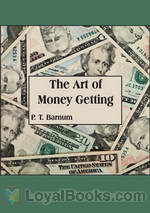 The Art of Money Getting
The Art of Money Getting
Phineas Taylor Barnum (July 5, 1810 – April 7, 1891) was an American showman, businessman, and entertainer, remembered for promoting celebrated hoaxes and for founding the circus that became the Ringling Bros. and Barnum & Bailey Circus.(br />His successes may have made him the first "show business" millionaire. Although Barnum was also an author, publisher, philanthropist, and for some time a politician, he said of himself, "I am a showman by profession...and all the gilding shall make nothing else of me," and his personal aims were "to put money in his own coffers". (Reference: Wikipedia.org) | |
By: Palladius | |
|---|---|
 Paradise, or Garden of the Holy Fathers (Book 1)
Paradise, or Garden of the Holy Fathers (Book 1)
The Desert Fathers were early Christian hermits, ascetics, and monks who mainly lived in the Scetes desert of Egypt. The most famous was St. Anthony the Great, who moved to the desert in 270 AD and became known as both the father and founder of desert monasticism. By the time Anthony died in AD 356, thousands of monks and nuns had been drawn to Anthony's example of living in the harsh conditions of the inner desert, praying the psalms, meditating on scripture, eating rarely, and working with their hands making baskets or mats. This work is a collection of stories from the lives of these early monks and nuns. - Summary by ancientchristian | |
 Paradise, or Garden of the Holy Fathers (Book 2)
Paradise, or Garden of the Holy Fathers (Book 2)
The Desert Fathers were early Christian hermits, ascetics, and monks who mainly lived in the Scetes desert of Egypt. The most famous was St. Anthony the Great, who moved to the desert in 270 AD and became known as both the father and founder of desert monasticism. By the time Anthony died in AD 356, thousands of monks and nuns had been drawn to Anthony's example of living in the harsh conditions of the inner desert, praying the psalms, meditating on scripture, eating rarely, and working with their hands making baskets or mats. This work is a collection of stories from the lives of these early monks and nuns. - Summary by ancientchristian | |
 Paradise, or Garden of the Holy Fathers (Book 3) (The Rule of Pachomius at Tabenna)
Paradise, or Garden of the Holy Fathers (Book 3) (The Rule of Pachomius at Tabenna)
The Desert Fathers were early Christian hermits, ascetics, and monks who mainly lived in the Scetes desert of Egypt. The most famous was St. Anthony the Great, who moved to the desert in 270 AD and became known as both the father and founder of desert monasticism. By the time Anthony died in AD 356, thousands of monks and nuns had been drawn to Anthony's example of living in the harsh conditions of the inner desert, praying the psalms, meditating on scripture, eating rarely, and working with their hands making baskets or mats. This work is a collection of stories from the lives of these early monks and nuns. - Summary by ancientchristian | |
 Paradise, or Garden of the Holy Fathers (Book 4) (The Histories of the Monks Who Lived in the Desert of Egypt, Which Were Compiled by Saint Hieronymus)
Paradise, or Garden of the Holy Fathers (Book 4) (The Histories of the Monks Who Lived in the Desert of Egypt, Which Were Compiled by Saint Hieronymus)
The Desert Fathers were early Christian hermits, ascetics, and monks who mainly lived in the Scetes desert of Egypt. The most famous was St. Anthony the Great, who moved to the desert in 270 AD and became known as both the father and founder of desert monasticism. By the time Anthony died in AD 356, thousands of monks and nuns had been drawn to Anthony's example of living in the harsh conditions of the inner desert, praying the psalms, meditating on scripture, eating rarely, and working with their hands making baskets or mats. This work is a collection of stories from the lives of these early monks and nuns. Summary by ancientchristian | |
By: Paul Leicester Ford (1865-1902) | |
|---|---|
 Many-Sided Franklin
Many-Sided Franklin
A fast-paced, somewhat racey look into the life, accomplishments and idiosyncrasies of Benjamin Franklin. Acclaimed biographer Paul L. Ford uses Franklin’s letters, papers and journals to step us through Franklin's many adventures, to reveal intimate details of his personal life - relations with siblings, wife, children, friends, business partners; his physique, health, illnesses, schooling, personal habits and goals; his opinions on education, philosophy, religion, friendship, industry; his library; his career as printer and publisher, writer and journalist, politician and diplomat, scientist, humorist, jack of all trades; and his relations at home and abroad with the “fairer sex“... | |
By: Pauline von Hugel (1858-1901) | |
|---|---|
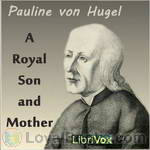 A Royal Son and Mother
A Royal Son and Mother
Demetrius Augustine Gallitzin (1770-1840) was an emigre Russian aristocrat and Catholic priest who is acclaimed as "The Apostle of the Alleghenies." He is the son of Prince Dimitri Alexeievich, a Russian ambassador to the Netherlands, and the German Countess Adelheid Amalie von Schmettau. Demetrius was raised Russian Orthodox, but at age seventeen he converted to Catholicism, the faith of his mother, following her miraculous recovery from a serious illness. Although the ambassador had planned a military career for his son and had sent him to America for an education, he was shocked to learn that his son had renounced his inheritance and had entered a seminary instead... | |
By: Pearl White (1889-1938) | |
|---|---|
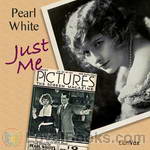 Just Me
Just Me
Perhaps the first memoir written by a film celebrity, Pearl White's Just Me gives a first-person account of the actress' rise to stardom. White guides us through her early childhood, her development as a performer, and finally to her breakout role in The Perils of Pauline--a role that made her the most popular "serial queen" of early cinema. Although romanticized and somewhat embellished, this book gives us a fascinating glimpse into the film industry's earliest years and the various myths of film stardom. | |
By: Percy Bysshe Shelley (1792-1822) | |
|---|---|
 History of a Six Weeks' Tour
History of a Six Weeks' Tour
Full titled History of a Six Weeks' Tour through a part of France, Switzerland, Germany, and Holland; with Letters Descriptive of a Sail Round the Lake of Geneva and of the Glaciers of Chamouni, this small journal was a travel narrative kept by the English Romantic authors Mary Shelley and Percy Bysshe Shelley. They describe two trips, both taken by Mary, Percy, and Mary's stepsister, Claire Clairmont: one across Europe in 1814, and one to Lake Geneva in 1816. Divided into three sections, the text consists of a journal, four letters, and Percy Shelley's poem "Mont Blanc". Apart from the poem, the text was primarily written and organized by Mary Shelley. - Summary by 1817 | |
By: Percy M. Turner | |
|---|---|
 Van Dyck
Van Dyck
A biography and critique of Van Dyck in The Masterpieces in Colour series. The Plates of the paintings are fully described and the artistic periods in his life's work are given as well as his place in history. | |
By: Peter Abelard (1079-1142) | |
|---|---|
 The Story of My Misfortunes
The Story of My Misfortunes
Autobiographies from remote historical periods can be especially fascinating. Modes of self-presentation vary greatly across the centuries, as of course does the very concept of Self. Peter Abelard, the medieval philosopher and composer, here gives a concise but vivid survey of his notoriously calamitous life. The work is couched in the form of a letter to an afflicted friend. Abelard’s abrasively competitive, often arrogant personality emerges at once in the brief Foreword, where he informs his correspondent: “(I)n comparing your sorrows with mine, you may discover that yours are in truth nought.. and so shall you come to bear them the more easily.” | |
By: Peter H. Ditchfield (1854-1930) | |
|---|---|
 Books Fatal to Their Authors
Books Fatal to Their Authors
This is a collection of stories of authors who have lost their fortunes and sometimes their lives after writing a book. The liberty of a person's conscience was unknown in the sixteenth and seventeenth centuries; Why should a man be drawn and quartered for writing what we know is the truth? What must it have been like to have lived in that era. At the time it was dangerous to say that the earth went around the sun and many other theories were treated in the same way. | |
By: Peter Kropotkin (1842-1921) | |
|---|---|
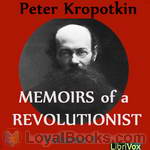 Memoirs of a Revolutionist, Vol. 1
Memoirs of a Revolutionist, Vol. 1
'Peter Kropotkin was a Russian anarcho-communist and scientist. This is his autobiography, and he writes not only about his own life, but also about 19th century Russian society and politics. He was born into the nobility and had a military education, but he gradually abandoned the values of his social class and became an anti-authoritarian socialist, opposed to both the rule of the Tsars and to the seizing of power by the authoritarian Bolsheviks. He was also interested in literature, biology, economics and geographical exploration. This first volume of his memoirs covers his childhood, his education, and the time he spent in Siberia. '. (Introduction by Elin, ) | |
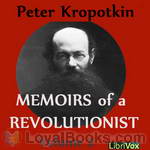 Memoirs of a Revolutionist, Vol. 2
Memoirs of a Revolutionist, Vol. 2
Peter Kropotkin was a Russian anarcho-communist and scientist. This is his autobiography, and he writes not only about his own life, but also about 19th century Russian society and politics. He was born into the nobility and had a military education, but he gradually abandoned the values of his social class and became an anti-authoritarian socialist, opposed to both the rule of the Tsars and to the seizing of power by the authoritarian Bolsheviks. He was also interested in literature, biology, economics and geographical exploration. This second and last volume of his memoirs covers his time in St Petersburg, his time in prison, and his journeys in Western Europe. ( | |
By: Philip Stanhope, 4th Earl of Chesterfield | |
|---|---|
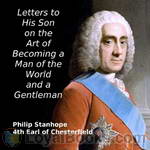 Letters to His Son on the Art of Becoming a Man of the World and a Gentleman
Letters to His Son on the Art of Becoming a Man of the World and a Gentleman
Philip Stanhope, Earl of Chesterfield, was at one time Ambassador to the Hague, negotiated the second Treaty of Vienna, was a founding governor of London’s Foundling Hospital, Lord-Lieutenant of Ireland, and Secretary of State. Having no legitimate children, his heir was his third cousin (another Philip) whom he adopted. Although known as a hard, calculating man, he is most well known for his letters to his natural son (i.e., illegitimate son) (also called Philip). When Philip died in 1768, the letters are addressed to his grandchildren (Philip’s two sons, Charles, and, yes, Philip!)... | |
By: Phineas Pett (1570-1647) | |
|---|---|
 Autobiography of Phineas Pett
Autobiography of Phineas Pett
Phineas Pett was a Master Shipbuilder from one of England's greatest shipbuilding families of the fifteenth and sixteenth centuries and kept a journal of his experiences and thoughts at this important and turbulent time in the industry. Although some pages were damaged or lost, the diary was transcribed by Samuel Pepys and preserved in the British Library. It was edited and published in the form of an autobiography by William Gordon Perrin of The Council of the Navy Records Society in 1918. - Summary by Lynne Thompson | |
By: Pope Gregory I (540-604) | |
|---|---|
 Life of St. Benedict
Life of St. Benedict
St. Benedict of Nursia was a sixth century monk and founder of monastic communities. His main achievement, the "Rule of St. Benedict," became one of the most influential monastic rules in the West. St. Benedict is sometimes called the founder of Western monasticism. One of the only ancient accounts of St. Benedict is found in the second volume of Pope Gregory I's four-book Dialogues, thought to have been written in 593. Gregory's account of Benedict's life provides a spiritual portrait of the gentle, disciplined abbot... | |
By: Princess Der Ling | |
|---|---|
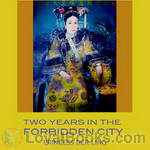 Two Years in the Forbidden City
Two Years in the Forbidden City
THE author of the following narrative has peculiar qualifications for her task. She is a daughter of Lord Yu Keng, a member of the Manchu White Banner Corps, and one of the most advanced and progressive Chinese officials of his generation. she became First Lady-in-Waiting to the Empress Dowager, and while serving at the Court in that capacity she received the impressions which provide the subject-matter of this book. Her opportunity to observe and estimate the characteristics of the remarkable woman who ruled China for so long was unique, and her narrative throws a new light on one of the most extraordinary personalities of modern times... | |
By: Publius Cornelius Tacitus | |
|---|---|
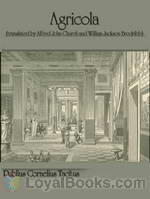 Agricola
Agricola
The Agricola (Latin: De vita et moribus Iulii Agricolae, lit. On the life and character of Julius Agricola) is a book by the Roman historian Tacitus, written c 98, which recounts the life of his father-in-law Gnaeus Julius Agricola, an eminent Roman general. It also covers, briefly, the geography and ethnography of ancient Britain. As in the Germania, Tacitus favorably contrasts the liberty of the native Britons to the corruption and tyranny of the Empire; the book also contains eloquent and vicious polemics against the rapacity and greed of Rome. This translation by Alfred John Church and William Jackson Brodribb, was first published in 1877. | |
By: Rabindranath Tagore (1861-1941) | |
|---|---|
 My Reminiscences
My Reminiscences
These Reminiscences were written and published by the Author in his fiftieth year, shortly before he started on a trip to Europe and America for his failing health in 1912. It was in the course of this trip that he wrote for the first time in the English language for publication. (from preface) | |
By: Rainer Maria Rilke (1875-1926) | |
|---|---|
 Auguste Rodin
Auguste Rodin
Rodin has pronounced Rilke's essay the supreme interpretation of his work. (From the translators’ Preface) Auguste Rodin, 1840-1917, was a French sculptor. Although Rodin is generally considered the progenitor of modern sculpture, he did not set out to rebel against the past. He was schooled traditionally, took a craftsman-like approach to his work, and desired academic recognition, although he was never accepted into Paris's foremost school of art. Sculpturally, Rodin possessed a unique ability to model a complex, turbulent, deeply pocketed surface in clay... | |
By: Ralph Keeler (1840-1873) | |
|---|---|
 Vagabond Adventures
Vagabond Adventures
Ralph Keeler failed as a novelist, but this autobiography reflects a life well-lived with humor and adventure. Keeler was in the same literary circle as satirist Bret Harte, novelist Charles Warren Stoddard, editor Thomas Bailey Aldrich, and essayist William Dean Howells. He so impressed Mark Twain that Twain wrote an essay about him called "Ralph Keeler". In 1873, on his way to Cuba, he reportedly was thrown overboard by a Spanish loyalist who objected to his backing of the revolutionary, anti-Spanish movement. - Summary by John Greenman | |
By: Ralph Waldo Emerson (1803-1882) | |
|---|---|
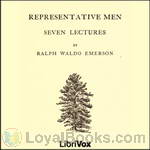 Representative Men
Representative Men
A series of biographical lectures originally published in 1850. Each chapter is a philosophical treatment of the life of an intellectual. The six representatives are Plato, Swedenborg, Shakespeare, Montaigne, Napolean and Goethe. (Introduction by S. Kovalchik) | |
By: Rebecca Deming Moore (1877-1935) | |
|---|---|
 When They Were Girls
When They Were Girls
Jane Addams, Susan B. Anthony, Clara Barton, Frances Burnett, Julia Howe, Hellen Keller, and Harriet Beecher Stowe are some of the influencial women in our history whose lives and accomplishments are covered in this little book. "When They Were Girls contains the stories of a group of American women, each one of whom occupies a very important place in her particular field. The stories of these women have been written many times before. We feel, however, that in this book you possibly may find that their stories have been written in a little different way... | |
By: Reuben Gold Thwaites (1853-1913) | |
|---|---|
 Daniel Boone (Thwaites)
Daniel Boone (Thwaites)
Daniel Boone was a great hunter, explorer, surveyor, and excellent rifleman; he knew Indians and fought them skillfully. His life was filled with adventures and, with this biography, Reuben Gold Thwaites takes us along on some of those adventures. An exciting read of one of America’s true historical heroes. | |
By: Rev. Angelo Pastrovicchi | |
|---|---|
 St. Joseph of Copertino
St. Joseph of Copertino
Joseph of Copertino was an Italian Conventual Franciscan friar who is honored as a Christian mystic and saint. He was said to have been remarkably unclever, but prone to miraculous levitation and intense ecstatic visions that left him gaping. Joseph began to experience ecstatic visions as a child, which were to continue throughout his life, and made him the object of scorn. He applied to the Conventual Franciscan friars, but was rejected due to his lack of education. He then pleaded with them to serve in their stables... | |
By: Rev. M. Raymond (1903-1990) | |
|---|---|
 God Goes to Murderer's Row
God Goes to Murderer's Row
The Hound of Heaven stalks the death house in pursuit of the soul of a modern Dismas in this true story of a doomed criminal who found God in the solitude of a prison. The author, Father Raymond, was a Trappist monk from Gethsemani, Kentucky. He was a well known author of such books as "The Man Who Got Even With God", "The Family That Overtook Christ", and many others. | |